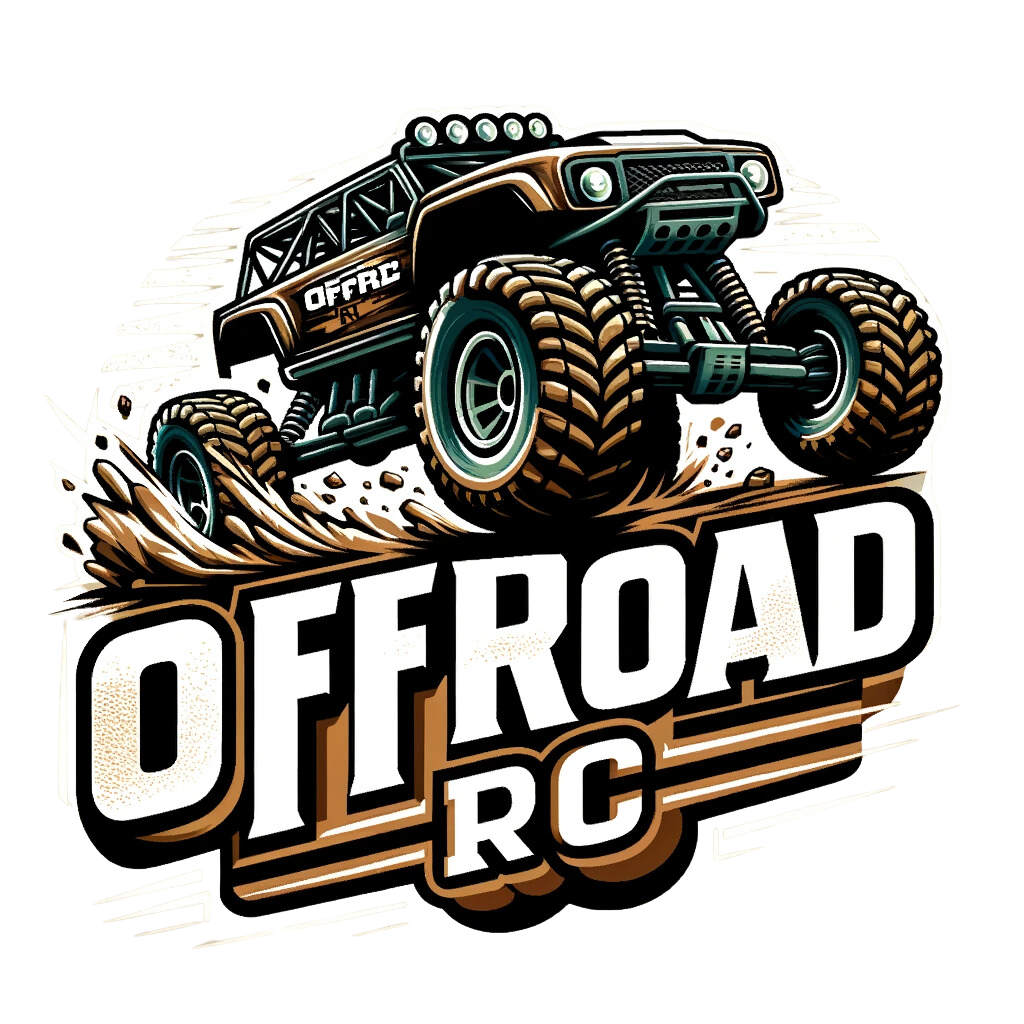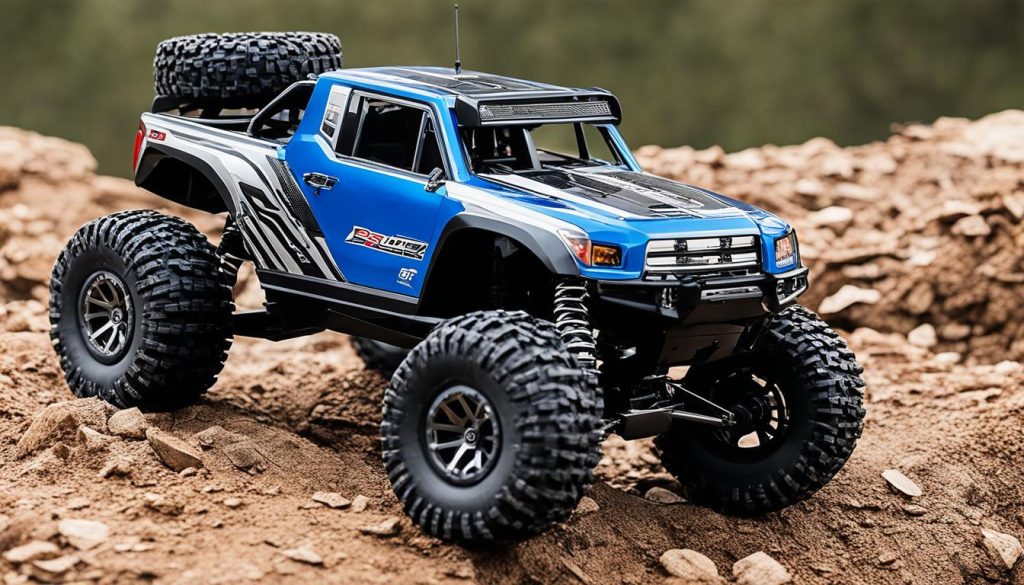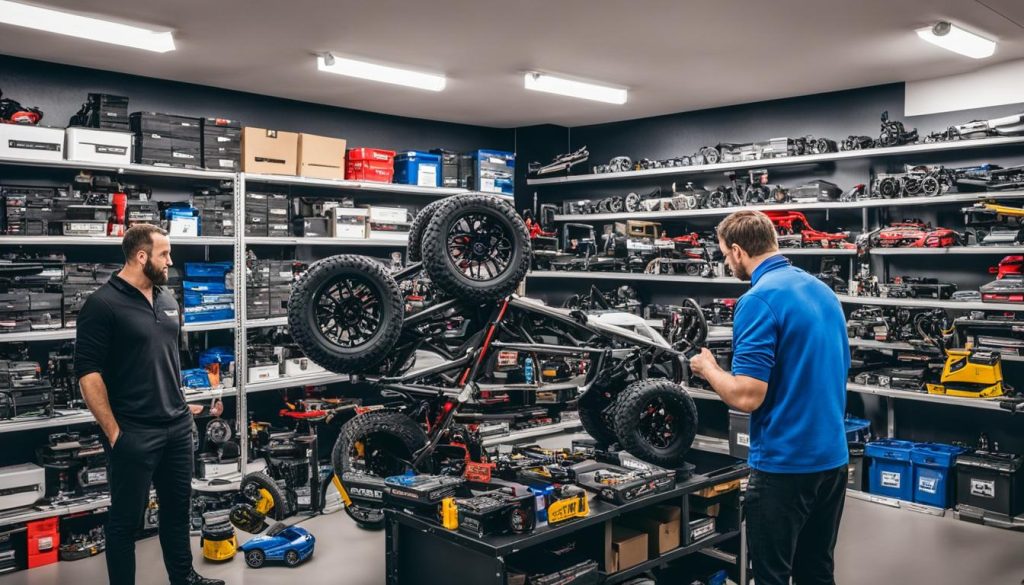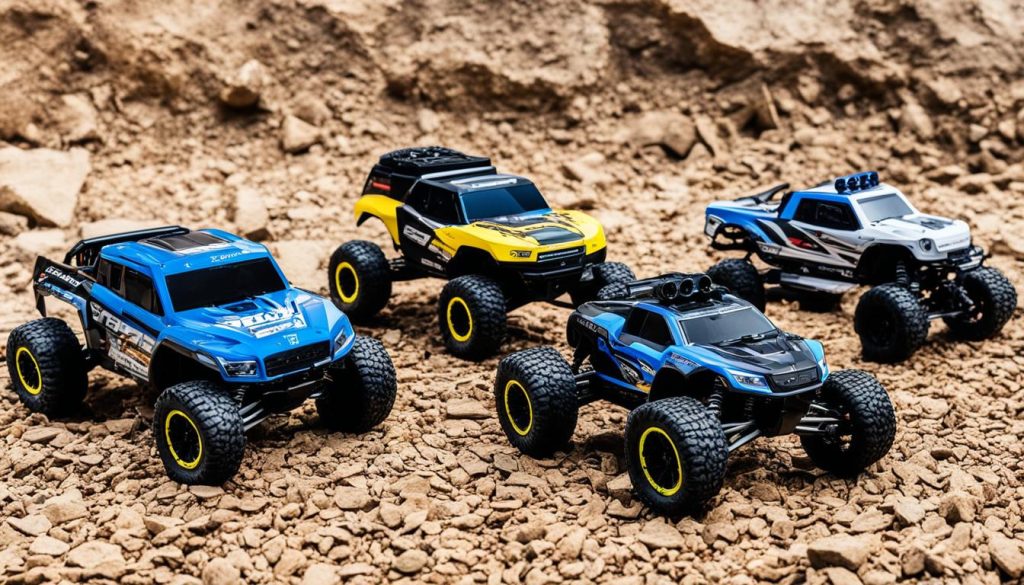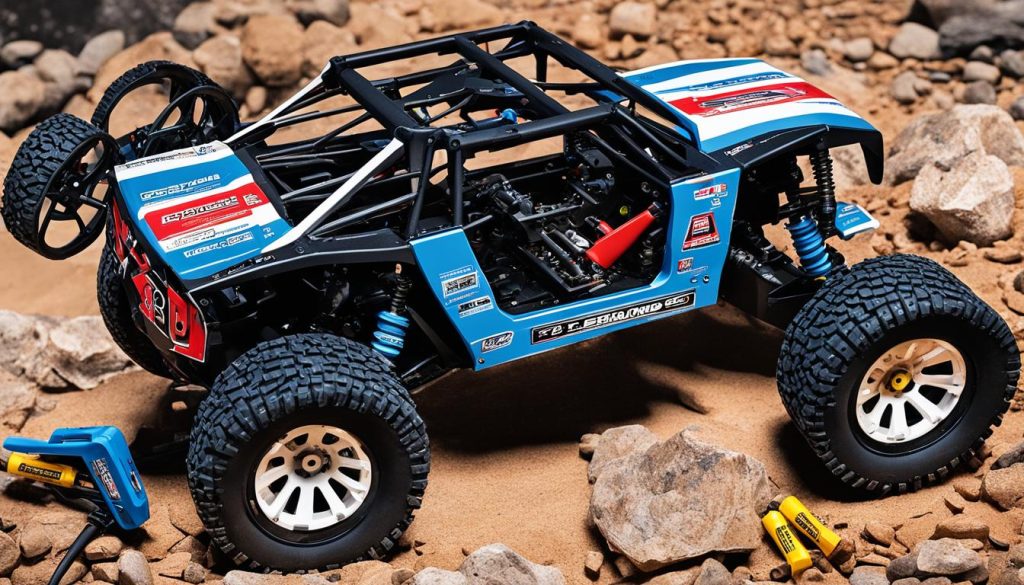When it comes to off-road RC cars, the materials used are key to their performance and durability. Whether you’re building your own RC car or looking to upgrade its parts, understanding the different materials available can help you make informed choices.
The chassis, in particular, plays a crucial role in the overall performance of an RC car. The material used for the chassis affects its stiffness, weight, and durability. Common materials used for RC car chassis include molded plastic, molded fiber-reinforced plastic, aluminum, and woven carbon fiber.
Each of these materials has its own strengths and weaknesses. Plastic chassis are commonly used in Ready-to-Run (RTR) kits due to their durability and low cost. Fiber-reinforced plastic offers greater strength and stiffness, but can be brittle in low temperatures. Aluminum chassis are durable and rigid, but heavier than plastic or carbon fiber. Woven carbon fiber chassis are lightweight and stiff, making them popular for racing RC cars, although they can be expensive and less durable.
By understanding the various materials used in off-road RC cars, you can choose the right ones for your needs and optimize your RC car’s performance. Let’s delve deeper into the importance of the chassis and explore other key components of off-road RC cars.
Key Takeaways:
- Materials for off-road RC cars include molded plastic, molded fiber-reinforced plastic, aluminum, and woven carbon fiber.
- The material used for the chassis affects stiffness, weight, and durability of the RC car.
- Plastic chassis are durable and cost-effective, while fiber-reinforced plastic offers greater strength and stiffness.
- Aluminum chassis are rigid but heavier, while woven carbon fiber chassis are lightweight but can be expensive.
- Choosing the right materials is crucial for optimizing performance and durability in off-road RC cars.
Importance of Chassis in Off-Road RC Cars
The chassis plays a crucial role in the performance of off-road RC cars. As the backbone of the vehicle, it provides structural stability and contributes to overall durability. Choosing the right chassis material is essential for optimizing performance and ensuring an exhilarating RC driving experience.
When it comes to off-road RC cars, a strong and lightweight chassis is paramount. The chassis directly influences speed, maneuverability, and handling. A sturdy chassis allows the car to maintain stability even in challenging terrains, while a lightweight design enhances acceleration and agility.
There are various materials used in the construction of RC car chassis, each with its unique characteristics and performance advantages. Some common chassis materials include:
- Molded Plastic: Plastic chassis are popular for their affordability and durability. They offer a good balance between strength and weight, making them suitable for entry-level or casual RC enthusiasts.
- Aluminum: Aluminum chassis are known for their robustness and rigidity. While they are heavier compared to plastic, they provide superior performance and longevity. Aluminum chassis are commonly used in high-end RC cars.
- Carbon Fiber: Carbon fiber chassis are lightweight and incredibly stiff, making them the material of choice for racing and high-performance RC cars. They offer unparalleled strength-to-weight ratio but come at a higher cost.
Understanding the role of the chassis and its impact on performance empowers RC enthusiasts to make informed decisions when selecting a material for their off-road RC car chassis. By carefully considering the characteristics of different materials, you can tailor your RC car to your specific needs and preferences.
| Chassis Material | Strength | Weight | Durability | Cost |
|---|---|---|---|---|
| Molded Plastic | Medium | Light | High | Low |
| Aluminum | High | Medium | High | Medium |
| Carbon Fiber | Very High | Very Light | Medium | High |
By analyzing the performance characteristics of different chassis materials, you can decide which material aligns best with your desired performance goals. Whether you prioritize durability, speed, or agility, the right chassis material can unlock the full potential of your off-road RC car.
Types of Chassis for Off-Road RC Cars
When it comes to off-road RC cars, the chassis plays a crucial role in providing structural stability and determining the vehicle’s performance. There are three primary types of chassis commonly found in off-road RC cars: ladder frame chassis, monocoque chassis, and tub chassis. Each of these chassis types has its own unique advantages and is suitable for different off-road applications.
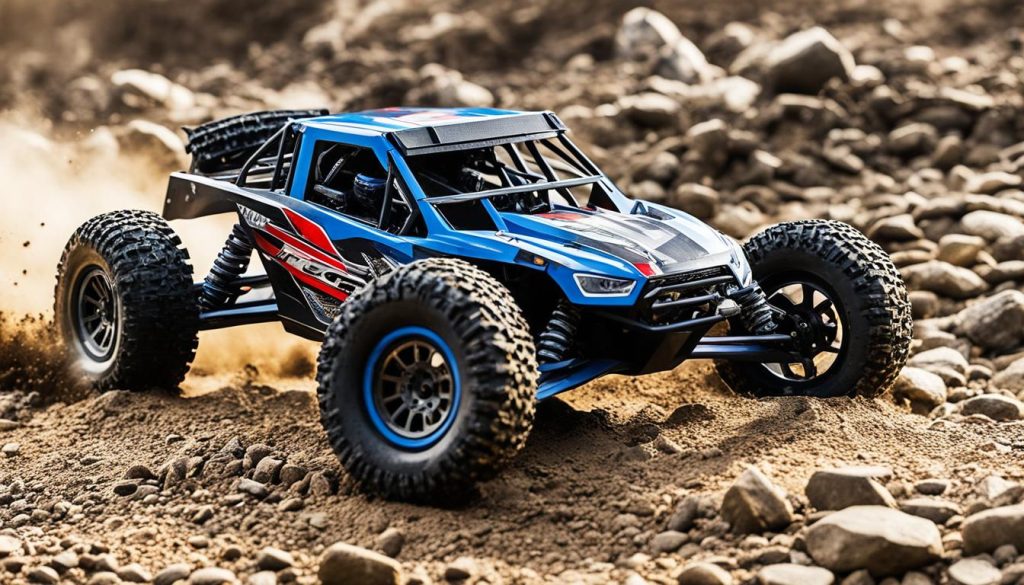
Ladder Frame Chassis
The ladder frame chassis is constructed using metal beams arranged in a ladder-like configuration. This design offers exceptional strength and durability, making it ideal for rugged off-road terrains. However, ladder frame chassis can be heavier compared to other types, which may affect the overall performance and agility of the RC car.
Monocoque Chassis
The monocoque chassis has a single-piece design that provides reduced weight and enhanced rigidity. Made from lightweight materials such as molded plastic or carbon fiber, this chassis type offers excellent maneuverability and responsiveness on various off-road surfaces. The monocoque design also helps distribute impact forces across the entire chassis, increasing the car’s durability.
Tub Chassis
The tub chassis features a flat base with raised sides, creating a protective enclosure for the internal components of the RC car. This design ensures excellent protection against damage from rough terrains and collisions. Tub chassis are often made of molded plastic or fiberglass, striking a balance between weight and durability.
Choosing the right chassis for your off-road RC car depends on the specific requirements of your desired applications. Whether you prioritize strength, weight, or protection, understanding the characteristics and advantages of each chassis type will help you make an informed decision.
Materials Used for Chassis in Off-Road RC Cars
When it comes to off-road RC cars, the chassis is a crucial component that greatly influences performance. Different materials are used for constructing RC car chassis, each with its own unique characteristics and benefits. Let’s take a closer look at three popular materials: plastic, aluminum, and carbon fiber.
1. Plastic Chassis
Plastic chassis are lightweight, affordable, and commonly used in entry-level RC cars. They offer good durability and can handle rough terrains. Plastic chassis are an excellent choice for beginners or those who are on a budget. However, they may not be as rigid as other materials, which can affect the overall performance of the RC car.
2. Aluminum Chassis
Aluminum chassis are known for their durability and rigidity. They offer excellent protection for internal components and can withstand high-impact situations. However, aluminum chassis are heavier compared to plastic or carbon fiber, which can slightly impact the agility and speed of the RC car. These chassis are commonly used in high-performance off-road RC cars.
3. Carbon Fiber Chassis
Carbon fiber chassis are the lightest and stiffest option available, making them highly desirable for racing RC cars. They provide exceptional strength and rigidity while minimizing weight. This allows for better acceleration, maneuverability, and overall performance. However, carbon fiber chassis tend to be more expensive and less durable than plastic or aluminum.
Choosing the right material for your RC car chassis depends on various factors such as budget, intended use, and personal preference. Whether you prioritize affordability, durability, or lightweight performance, there’s a chassis material that suits your needs.
Role of Suspension in Off-Road RC Cars
The suspension system in off-road RC cars plays a crucial role in the overall performance and handling of the vehicle. It is an essential component that ensures a smooth ride, better control, and optimal traction on different terrains.
The primary function of the suspension is to absorb shocks and impacts, allowing the car to navigate rough surfaces without compromising stability. By absorbing the bumps and vibrations, the suspension system helps to maintain consistent traction by keeping the tires in contact with the ground, enhancing the car’s ability to maneuver and handle various obstacles.
There are two main types of suspensions commonly used in off-road RC cars:
- Independent Suspension
- Solid Axle Suspension
The independent suspension allows each wheel to move independently, enabling better flexibility and adaptability to rough terrains. This type of suspension offers excellent off-road capabilities and improved stability on uneven surfaces, ensuring a smooth and responsive driving experience.
On the other hand, the solid axle suspension makes the wheels on each axle move together as a unit. This design provides greater stability on level surfaces and enhances the overall durability of the vehicle. Solid axle suspension is typically used in off-road RC cars that require extra rigidity and strength in extreme driving conditions.
Understanding the role of suspension and its impact on performance is crucial for RC car enthusiasts. By choosing the right suspension system and making appropriate adjustments, such as tuning the shock absorbers and adjusting ride height, RC car owners can optimize their vehicle’s performance and enhance their off-road driving experience.
Comparison of Independent Suspension and Solid Axle Suspension
| Features | Independent Suspension | Solid Axle Suspension |
|---|---|---|
| Flexibility | High | Low |
| Off-road Capabilities | Excellent | Good |
| Stability on Level Surfaces | Good | Excellent |
| Strength and Durability | Good | Excellent |
Types of Suspensions in Off-Road RC Cars
When it comes to off-road RC cars, the type of suspension plays a crucial role in their performance and capabilities. Two common types of suspensions found in off-road RC cars are independent suspension and solid axle suspension. Let’s take a closer look at each of these suspensions and their unique characteristics:
Independent Suspension
Independent suspension allows each wheel on the RC car to move independently. This type of suspension system uses individual suspension arms, shocks, and springs for each wheel. The independent movement of the wheels provides several advantages:
- Improved off-road capabilities: Independent suspension allows the wheels to adapt to uneven terrain, providing better traction and control.
- Enhanced shock absorption: Each wheel can react independently to bumps and obstacles, reducing the impact on the overall stability of the RC car.
- Better maneuverability: The ability of each wheel to move independently allows for tighter turns and improved handling.
Independent suspension is commonly found in high-performance off-road RC cars that are designed for challenging terrains and competitive racing.
Solid Axle Suspension
Solid axle suspension, also known as a live axle suspension, moves the wheels on each axle together. In this type of suspension system, the two wheels on the same axle are interconnected. Here are some key characteristics of solid axle suspension:
- Increased stability: By keeping the wheels on each axle connected, solid axle suspension provides greater stability, especially on level surfaces.
- Robust and durable: The rigid design of solid axle suspension makes it ideal for off-road RC cars that need to withstand rough terrains and heavy impacts.
- Simplified design: Solid axle suspension systems are generally simpler in design compared to independent suspension, resulting in easier maintenance and repairs.
Solid axle suspension is often found in off-road RC cars that are built for rock crawling, trail driving, and other applications that require excellent stability and durability.
Here’s an image showcasing the different types of suspensions in off-road RC cars:
Understanding the types of suspensions available in off-road RC cars allows enthusiasts to choose the right setup for their specific needs and intended usage. Whether you prefer the adaptability of independent suspension or the stability of solid axle suspension, each type has its advantages and is suitable for different off-road conditions.
Tuning the Suspension for Off-Road RC Cars
Tuning the suspension is essential for optimizing the performance of your off-road RC car. By making careful adjustments, you can fine-tune the suspension to suit different terrains and driving conditions. Consider the following factors when tuning your RC car’s suspension:
- Spring tension: Adjusting the spring tension can have a significant impact on how your RC car handles bumps and jumps. Increasing the tension can provide better stability and control, while decreasing it can improve the car’s ability to navigate rough terrains.
- Shock oil viscosity: Choosing the right shock oil viscosity is crucial for the suspension’s response to different terrains. Thicker oil provides a firmer suspension, ideal for high-speed off-road driving, while thinner oil offers better shock absorption on uneven surfaces.
- Camber angle: The camber angle refers to the vertical tilt of the wheels. Adjusting the camber angle can improve cornering ability and stability. Negative camber (wheels angled inward at the top) enhances traction and prevents excessive body roll, while positive camber (wheels angled outward at the top) improves straight-line stability.
Experimenting with different suspension settings is key to finding the optimal setup for your off-road RC car. Keep in mind that the ideal tuning may vary depending on the specific model, driving style, and terrain. Regularly test and adjust the suspension to achieve the best performance for your RC car.
Table: Suspension Tuning Tips
| Tuning Aspect | Adjustment |
|---|---|
| Spring Tension | Increase for better stability and control, decrease for improved rough terrain performance. |
| Shock Oil Viscosity | Thicker oil for firmer suspension (high-speed driving), thinner oil for better shock absorption (uneven terrains). |
| Camber Angle | Negative camber for enhanced traction and reduced body roll, positive camber for improved straight-line stability. |
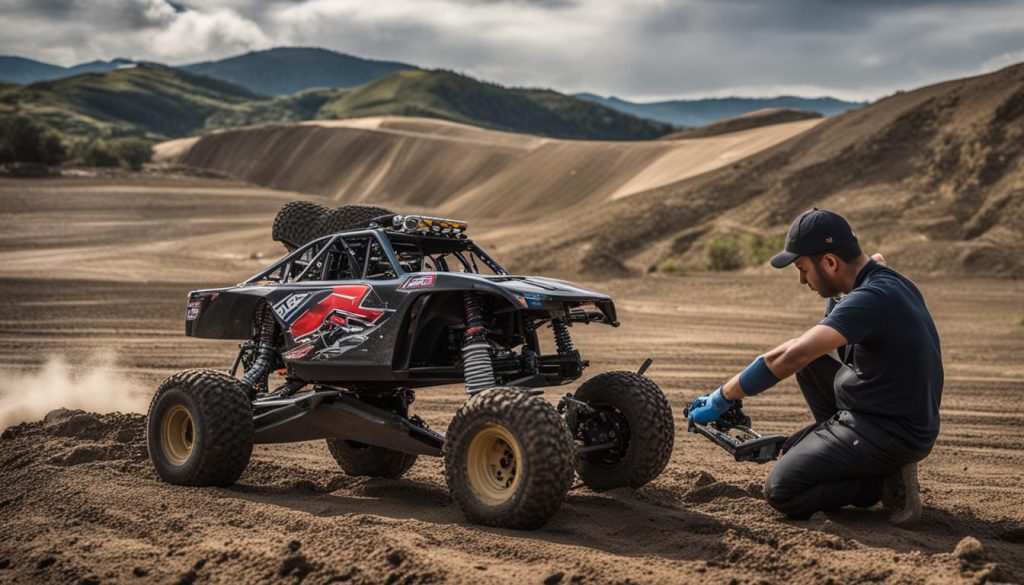
Role and Components of the Drivetrain in Off-Road RC Cars
If you’re passionate about off-road RC cars, understanding the role and components of the drivetrain is essential for optimizing performance and maintenance. The drivetrain is responsible for transferring power from the motor to the wheels, and its primary components include the transmission, differential, and driveshaft.
The Transmission
The transmission plays a pivotal role in the drivetrain by altering the gear ratio between the motor and the wheels. It allows you to control the speed and torque output, enabling you to adapt to various terrains and driving conditions. By selecting the appropriate gear ratio, you can optimize acceleration, top speed, and overall performance.
The Differential
The differential is a critical component of the drivetrain that allows the wheels on the same axle to rotate at different speeds. This feature enables smooth and stable turns while maintaining traction. By allowing the outer wheel to rotate faster than the inner wheel during a turn, the differential compensates for the varying distances each wheel needs to cover. This helps your RC car navigate curves with precision and reduces the risk of skidding or flipping.
The Driveshaft
The driveshaft is responsible for transmitting power from the transmission to the differential. It connects these two essential components, ensuring a seamless power transfer throughout the drivetrain. The driveshaft needs to be durable and well-maintained to withstand the forces generated by the motor and the torque exerted on the wheels. Regular inspection and lubrication are crucial to prevent excessive wear and ensure optimal performance.
By understanding the role and components of the drivetrain in off-road RC cars, you can make informed decisions when it comes to maintenance, upgrades, and performance optimization. Now that you know how the transmission, differential, and driveshaft work together, you can fine-tune your RC car to tackle any off-road challenge.
Maintaining the Drivetrain in Off-Road RC Cars
Regular maintenance is crucial for keeping your off-road RC car’s drivetrain in optimal condition, ensuring optimal performance and longevity. By following these essential drivetrain maintenance tips, you can maximize the reliability and performance of your RC car.
Lubrication
Proper lubrication is key to reducing friction and wear in the drivetrain. Be sure to use high-quality lubricants designed specifically for RC cars. Apply lubrication to the gears, bearings, and any other moving parts in the drivetrain. Regularly check the lubrication levels and reapply as needed to ensure smooth operation.
Inspection and Cleaning
Regularly inspecting and cleaning the drivetrain is vital for detecting and preventing any damage or debris buildup. Here are a few key steps to follow:
- Remove any dirt, dust, or debris from the drivetrain components using a soft brush or compressed air.
- Check for any signs of wear or damage, such as worn-out gears or loose fittings.
- Inspect the bearings for smooth rotation and replace any that show signs of wear or binding.
- Ensure that all screws and fasteners are securely tightened.
Regular maintenance and cleaning will help keep your drivetrain in top shape, preventing any issues and prolonging its lifespan.
Mesh Alignment
Proper mesh alignment of gears in the drivetrain is essential for smooth and efficient power transmission. A misaligned mesh can lead to excessive wear and poor performance. Follow these steps to ensure correct mesh alignment:
- Loosen the screws that hold the motor in place.
- Rotate the pinion gear on the motor shaft to align it with the spur gear on the drivetrain.
- Hold the gears in alignment and tighten the screws to secure the motor.
- Check the mesh by manually turning the drivetrain. It should rotate freely without any binding or excessive play.
- Make any necessary adjustments to achieve the correct mesh alignment.
Proper mesh alignment will ensure efficient power transfer and prevent unnecessary wear on the gears.
Regular maintenance, lubrication, inspection, cleaning, and proper mesh alignment are all essential for maintaining the drivetrain in your off-road RC car. By following these maintenance tips, you can keep your drivetrain in optimal condition, ensuring reliable performance and prolonging the lifespan of your RC car.
Conclusion
Optimizing the performance of your off-road RC car begins with a thorough understanding of the materials used in its construction. From the chassis to the suspension and drivetrain, each component plays a crucial role in enhancing control, speed, and durability. By selecting the right materials and components, you can maximize your RC car experience, whether you’re racing on challenging terrains or tackling off-road adventures.
Regular maintenance and tuning are key to ensuring the continued optimal performance of your RC car. Proper lubrication, regular inspection, and cleaning of the drivetrain are essential to minimize friction and prevent damage. Additionally, tuning the suspension according to different terrains and adjusting the gearing ratio of the transmission can further enhance your RC car’s performance.
By applying the knowledge gained from this article, you can unlock the true potential of your off-road RC car. Whether you’re a seasoned enthusiast or just starting out, understanding the materials, components, and maintenance practices will help you optimize your RC car’s performance and extend its lifespan. So, get out there, fine-tune your RC car, and embark on exhilarating off-road adventures like never before!
FAQ
What materials are commonly used for off-road RC car chassis?
Common materials used for RC car chassis include molded plastic, molded fiber-reinforced plastic, aluminum, and woven carbon fiber.
What are the advantages of plastic chassis in off-road RC cars?
Plastic chassis are lightweight, durable, and cost-effective, making them commonly used in entry-level RC cars.
Why is fiber-reinforced plastic a popular choice for off-road RC car chassis?
Fiber-reinforced plastic offers greater strength and stiffness than regular plastic, but can be more brittle in low temperatures.
What are the benefits of using an aluminum chassis in an off-road RC car?
Aluminum chassis are durable, rigid, and provide good performance, although they tend to be heavier than plastic or carbon fiber.
Why is woven carbon fiber preferred for racing RC cars?
Woven carbon fiber is lightweight and stiff, making it a popular choice for high-performance racing RC cars. However, it can be expensive and less durable than other materials.
What is the role of the chassis in off-road RC cars?
The chassis is the backbone of an RC car and provides structural stability, helping to maintain speed and maneuverability.
What are the different types of chassis commonly found in off-road RC cars?
The three primary types of chassis commonly found in off-road RC cars include ladder frame chassis, monocoque chassis, and tub chassis.
What are the advantages of ladder frame chassis in off-road RC cars?
Ladder frame chassis are constructed using metal beams, offering strength but can be heavier.
What are the benefits of monocoque chassis in off-road RC cars?
Monocoque chassis have a single-piece design, providing reduced weight and enhanced rigidity.
Why are tub chassis popular for off-road RC cars?
Tub chassis have a flat base with raised sides, offering excellent protection for internal components.
What is the role of the suspension system in off-road RC cars?
The suspension system in off-road RC cars absorbs shocks and impacts, ensuring a smooth ride and better control. It also helps maintain consistent traction by keeping the tires in contact with the ground.
What are the two common types of suspensions in off-road RC cars?
The two common types of suspensions in off-road RC cars are independent suspension and solid axle suspension.
What are the advantages of independent suspension in off-road RC cars?
Independent suspension allows each wheel to move independently, providing excellent off-road capabilities.
Why are solid axle suspensions preferred for off-road RC cars?
Solid axle suspension makes the wheels on each axle move together, offering greater stability on level surfaces.
What factors should be considered when tuning the suspension in off-road RC cars?
Factors to consider when tuning the suspension include spring tension, shock oil viscosity, and camber angle.
How does adjusting spring tension impact the suspension in off-road RC cars?
Adjusting spring tension can affect how the car handles bumps and jumps.
What is the importance of choosing the right shock oil viscosity for off-road RC cars?
Choosing the right shock oil viscosity can impact the suspension’s response to different terrains.
How does adjusting the camber angle affect the performance of off-road RC cars?
Adjusting the camber angle can improve cornering ability and stability in off-road RC cars.
What is the purpose of the drivetrain in off-road RC cars?
The drivetrain in off-road RC cars is responsible for transferring power from the motor to the wheels.
What are the primary components of the drivetrain in off-road RC cars?
The primary components of the drivetrain in off-road RC cars include the transmission, differential, and driveshaft.
Why is regular maintenance of the drivetrain important for off-road RC cars?
Regular maintenance of the drivetrain is essential for optimal performance and longevity.
What are some drivetrain maintenance tips for off-road RC cars?
Drivetrain maintenance tips include lubrication, inspection and cleaning, and maintaining proper mesh alignment of gears.
How can applying the knowledge gained enhance the performance of off-road RC cars?
Understanding the materials used in off-road RC cars, as well as the role of the chassis, suspension, and drivetrain, is crucial for optimizing performance and enhancing the overall RC car experience.
